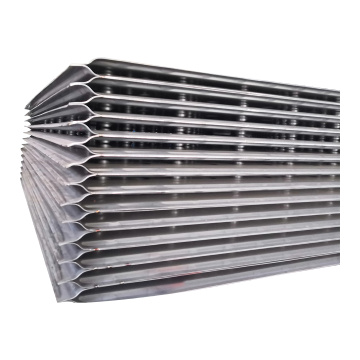
Why does stainless steel not rust? What it is and how it works!
In 1913, British metallurgist Harry Brearly, working on a project to improve rifle barrels, accidentally discovered that adding chromium to mild steel gave it resistance to contamination. In addition to iron, carbon and chromium, modern stainless steel can also contain other elements such as nickel, niobium, molybdenum, titanium, etc. Nickel, molybdenum, niobium and chromium improve the corrosion resistance of stainless steel. It has an additional minimum of 12% chromium to make it 'less' resistant to rust, or staining, than other types of steel. The chromium in the steel combines with oxygen in the atmosphere to form a thin, invisible layer containing chromium oxide, a so-called passivation film. The dimensions of chromium atoms and their oxides are similar, so they fit neatly together on the surface of the metal, forming a stable layer only a few atoms thick. If the metal is cut or scratched and the passivation film is destroyed, more oxides will quickly form and recycle the exposed surface, protecting it from oxidative corrosion. (Iron, on the other hand, rusts quickly because iron atoms are much smaller than its oxides, so the oxides form loose rather than tightly packed layers and flake off.) The passive film requires oxygen to repair itself, so stainless steel It has poor corrosion resistance in environments with low oxygen and poor blood circulation. In seawater, the chlorides from the salt will attack and damage the passive film faster than it can be repaired in a low-oxygen environment.
Types of stainless steel
The three main types of stainless steel are austenitic, ferritic and martensite. All three types of steel have defined microstructures or dominant crystalline phases.
Austenite:
Austenitic steels have austenite as their main phase (face-centered cubic crystal). These are alloys containing chromium and nickel (sometimes manganese and nitrogen), centered around the type 302 composition of iron, 18% chromium and 8% nickel. Austenitic steels are heat treated without hardening. The most familiar stainless steel is probably 304, sometimes called T304 or just 304. Type 304 stainless steel surgical is an austenitic steel containing 18-20% chromium and 8-10% nickel.
Ferrite:
Ferritic steels have ferrite (body-centered cubic crystals) as the main phase. These steels contain a base of iron and chromium, consisting of 17% chromium type 430. Ferritic steels are less tough than austenitic steels and are not hardened by heat treatment.
Martensite:
The characteristic orthorhombic martensitic structure was first observed by German microscope Adolf Martens around 1890. Martensitic steel is a mild steel built around type 410 iron, 12% chromium, and 0.12% carbon. They may be tempered and hardened. Martensitic steel provides great hardness, but it also reduces its toughness, making it brittle, so few steels are fully hardened. There are also other grades of stainless steel such as precipitation hardened, duplex and cast stainless steel grades. Stainless steel can be produced in a variety of finishes and textures, and can be dyed in a broad spectrum of colors.
Passivation:
There is some controversy over whether the corrosion resistance of stainless steel can be enhanced through the passivation process. Essentially, passivation removes free iron from the surface of steel. This is done by immersing the steel in a solution of an oxidizing agent, such as nitric or citric acid. Passivation reduces surface discoloration because the top layer of iron is removed. While passivation does not affect the thickness or effectiveness of the passive layer, it is useful in producing a clean surface for further processing such as plating or painting. On the other hand, if the oxidizer is not completely removed from the steel, as sometimes occurs with tight joints or corner pieces, crevice corrosion may result. Most studies indicate that reducing particle surface corrosion does not reduce susceptibility to pitting corrosion.




![]() February 26, 2024
February 26, 2024 Why does stainless steel not rust? What it is and how it works!
Why does stainless steel not rust? What it is and how it works!